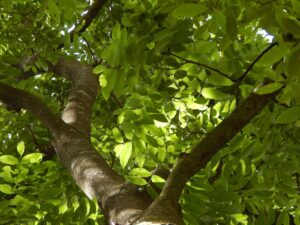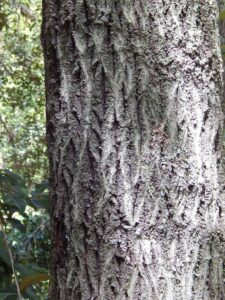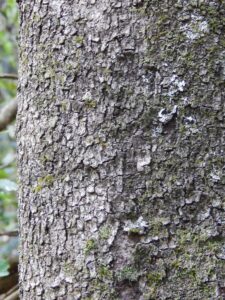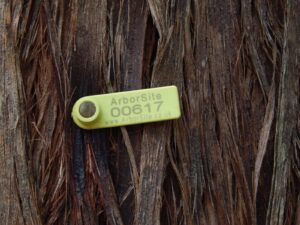Harry Loots from APS Northern Beaches reports on a visit to Sydney’s Cumberland State Forest. All photos by Harry.
This is the first time that I have visited Cumberland State Forest although I have driven past many times. Hidden off Castle Hill Road is Australia’s only metropolitan State Forest, a mecca for those living in the surrounding area. The district had been farmed in the 19th century with the 40 acres that became a state forest in 1939 cleared for agriculture in 1908. During the 1940s an Arboretum was established and the rest of the forest was allowed to regenerate naturally.
Sydney Basin species
The Sydney Blue Gum (Eucalyptus saligna) has regenerated quite successfully although many other species of the sclerophyll forest have also prospered. I found many of the common Sydney Basin species including:
- Blueberry Ash (Elaeocarpus reticulatus), which is now in flower
- the Cheese Tree (Glochidion ferdinandi) that has become dominant in many a backyard
- Pittosporum undulatum that has crept into forest areas as a native weed
- the majestic Sydney Blue Gum (Eucalyptus saligna), a dominant tree of past North Shore forests
- the Blackbutt (Eucalyptus pilularis) that is common in east coast forests
- other eucalypts including Narrow Leafed Ironbark (Eucalyptus crebra), Grey Gum (Eucalyptus punctata), Red Ironbark (Eucalyptus fibrosa) and Spotted Gum (Corymbia maculata)
- Turpentine (Syncarpia glomulifera)
- and last, but not least, the Smooth Barked Apple (Angophora costata) that even self-seeds in my garden and is a dominant species around Middle Harbour and the Northern Beaches.
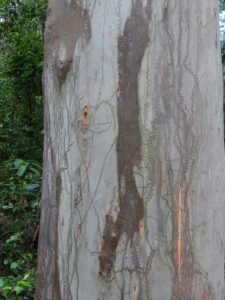
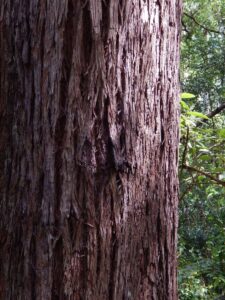
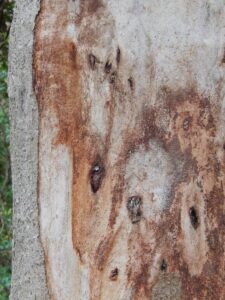
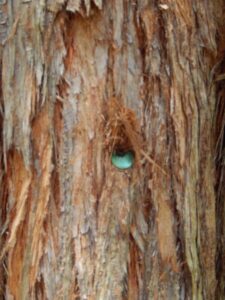
Species introduced to Sydney
In the Arboretum the Forestry Commission had experimented with many northern NSW and south east Queensland rainforest species to see how well they would grow. Research was conducted for decades after the 1940s to determine the viability of these species in a Sydney climate. At the top of the forest a small plantation of Hoop Pine (Araucaria cunninghamii) and Bunya Pine (Araucaria bidwilli) was planted in a gully. These species were a success and have migrated down the gully, however they have not been grown commercially in NSW. Near the pines grow the Giant Ironwood (Backhousia subargentea) notable for its very smooth bark with brown, green and salmon hues. Further along there are plots of the Flooded Gum (Eucalyptus grandis) which are prominent with their tall white trunks. This species has economic value being the major forest tree in NSW eucalypt plantations.
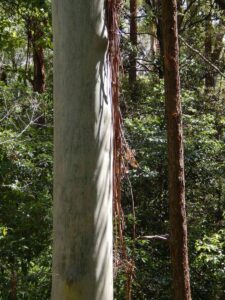
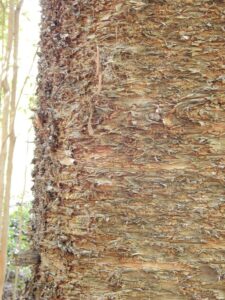
Heritage name labels
There are currently 150 different types of plants in the Arboretum. The walk along the track from the bottom to the top of the forest is an education with 1950s and 1960s signs naming the large number of planted rainforest trees. Their common names indicate the inclination of foresters of the past when these trees were felled for their timber. Some of these names seem as arbitrary as the names of contemporary pot plants sold in nurseries.
I managed to find: Large-Fruited Red Mahogany (Eucalyptus pellita), Tallowwood (Eucalyptus microcorys), Gympie Messmate (Eucalyptus cloeziana), Tindale’s Stringybark (Eucalyptus tindaliae), Brush Ironbark (Bridelia exaltata), Corkwood (Duboisia myoporoides), Flintwood (Scolopia braunii), Hard Corkwood (Endiandria sieberi), Red Ash (Alphitonia excelsa), Red Olive Plum (Elaeodendron australe), Forest Maple (Cryptocarya rigida), Grey Myrtle (Backhousia myrtifolia), Red cedar (Toona ciliata), Hairy Clerodendrum (Clerodendrum tomentosum), Pink Cherry (Austrobuxus swainii), Native Hibiscus (Hibiscus heterophyllus) and Scentless Rosewood (Synoum glandulosum). There are sure to be many more.
